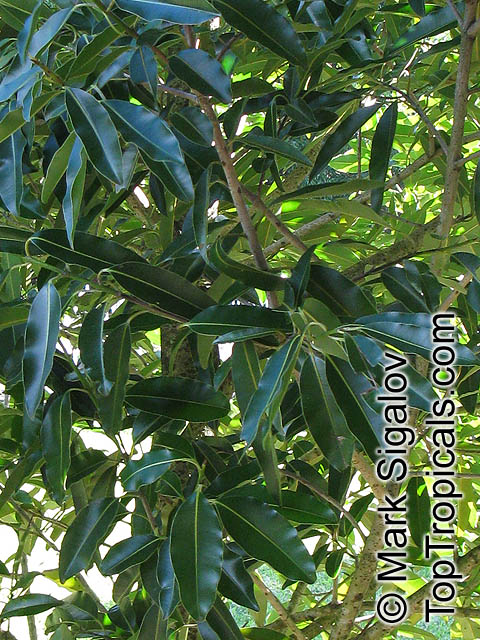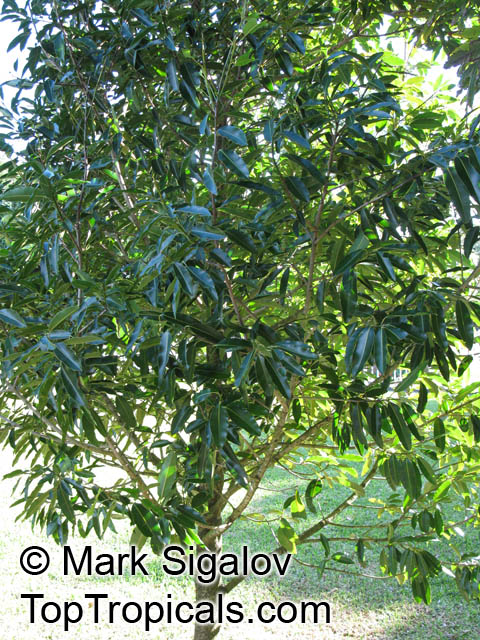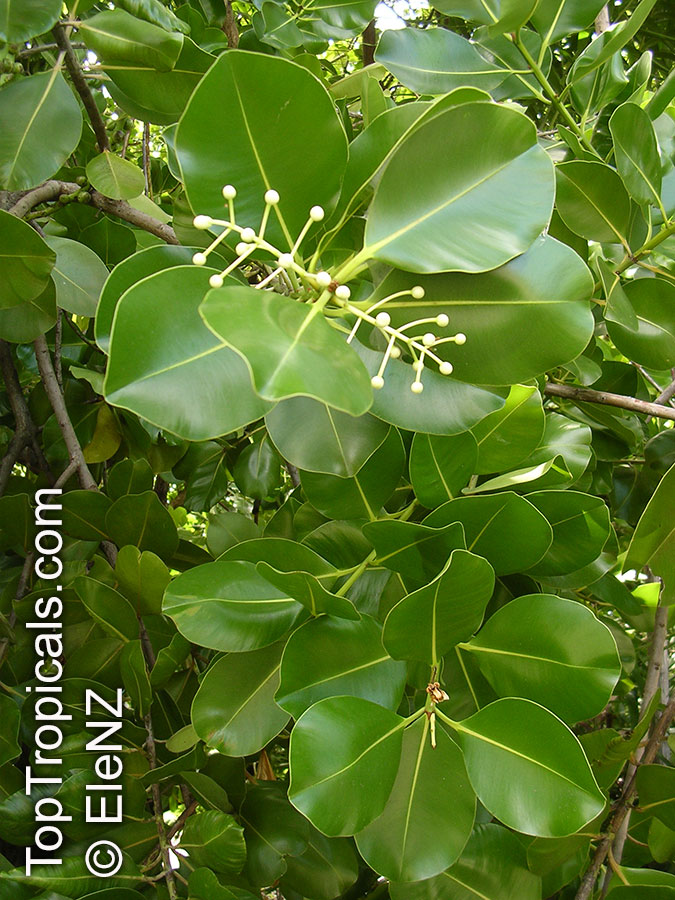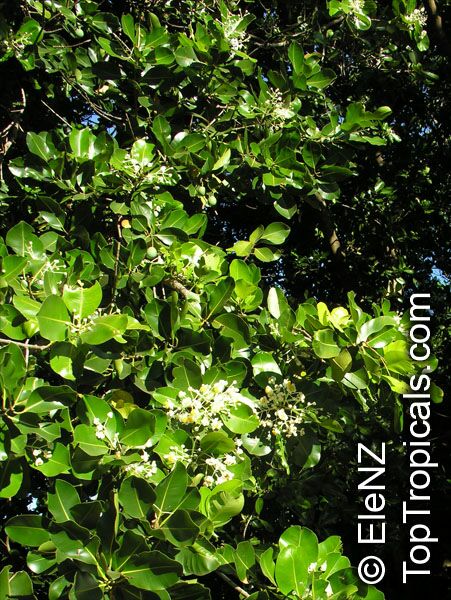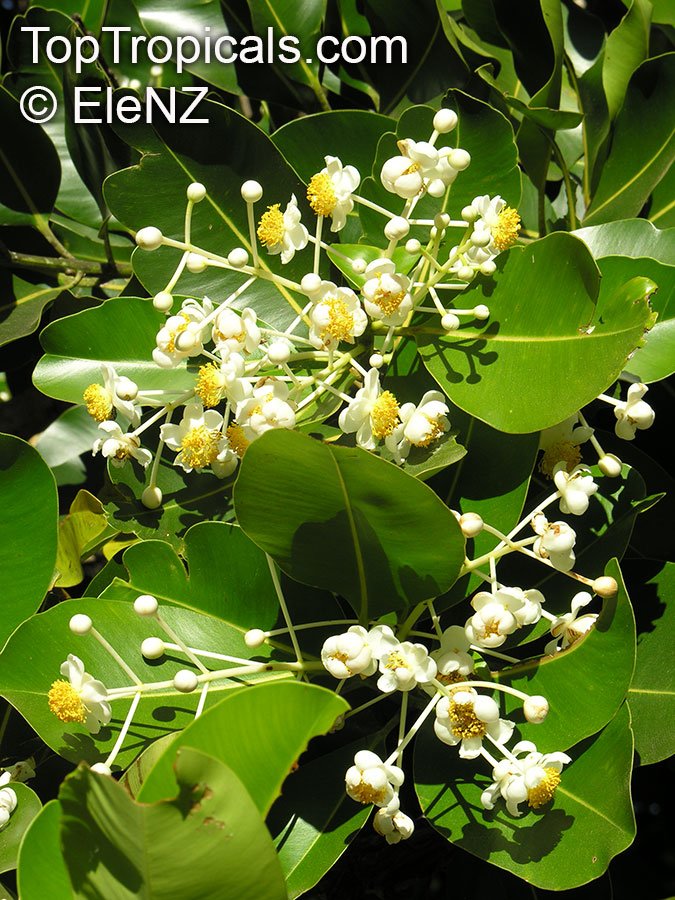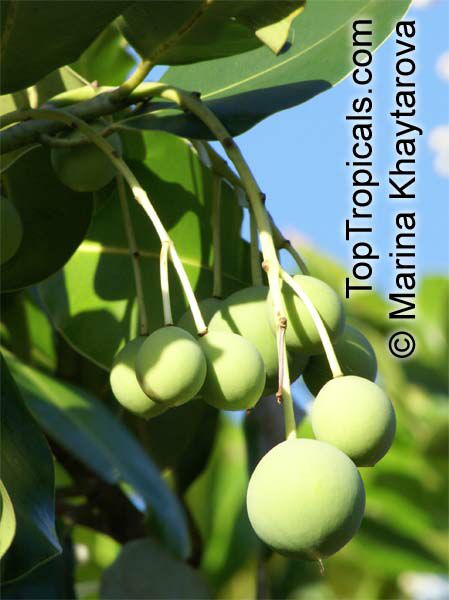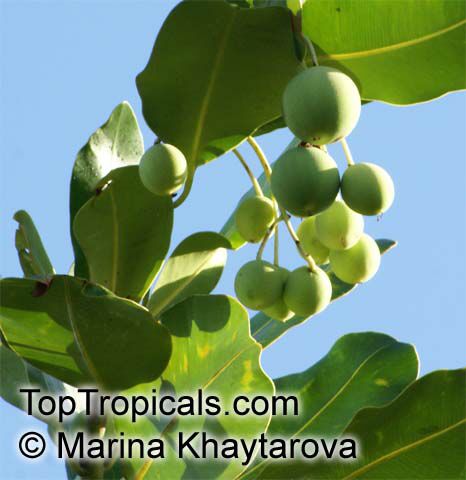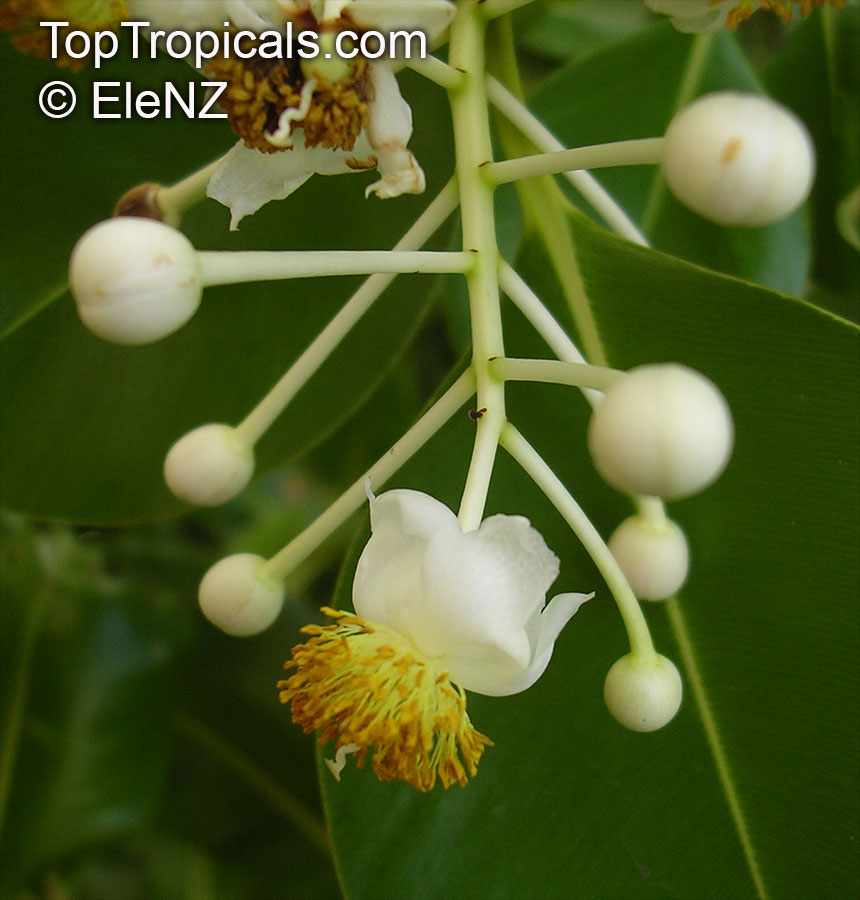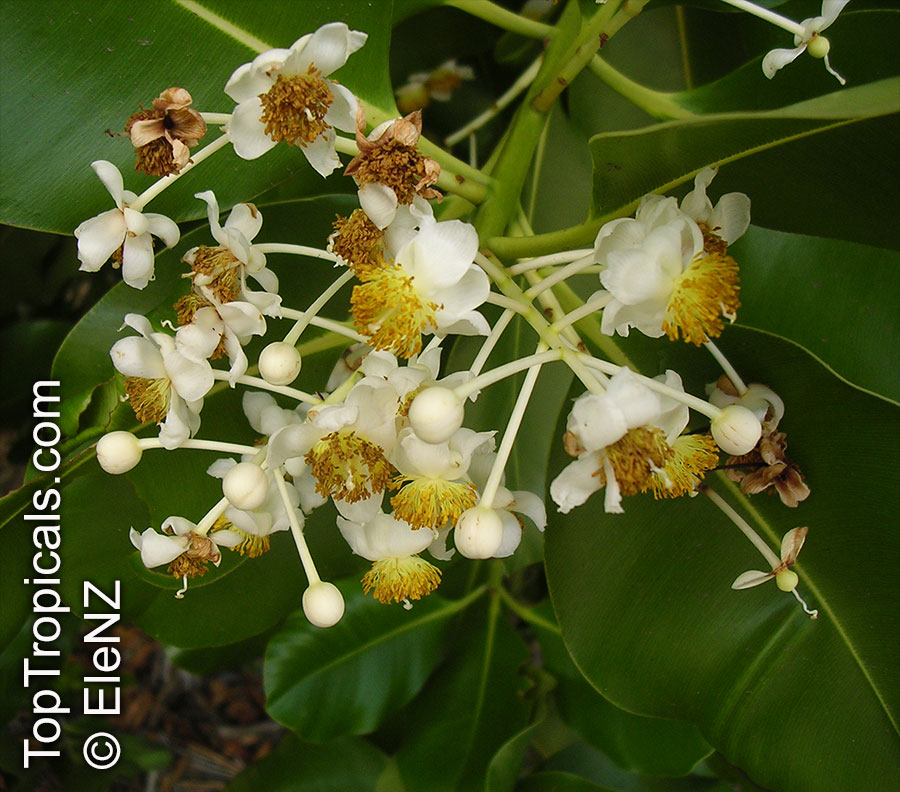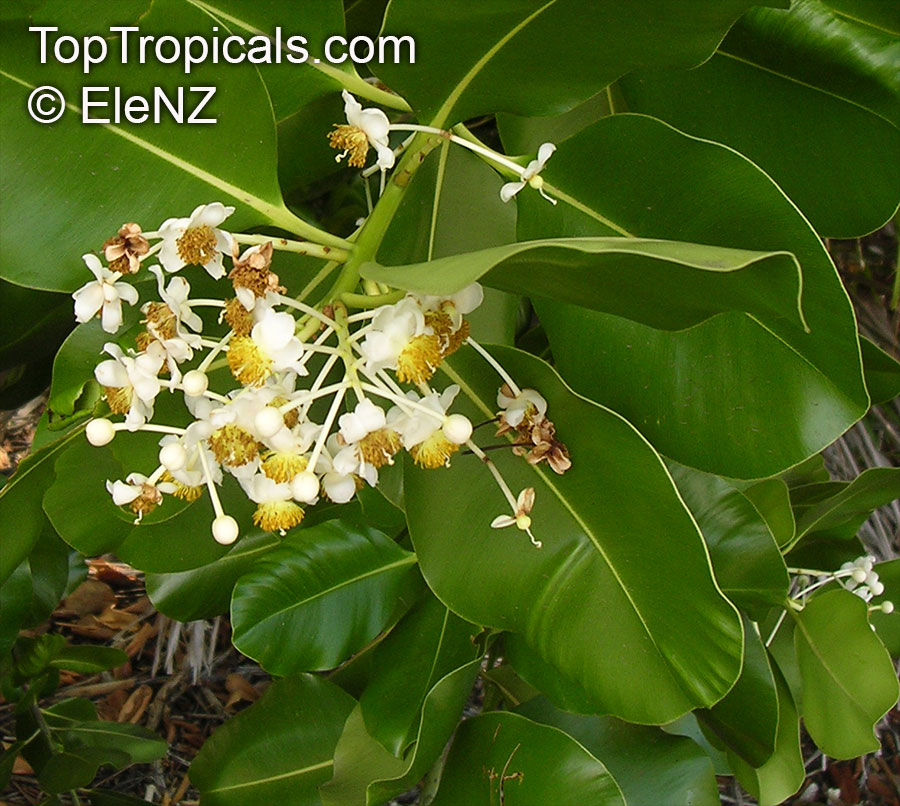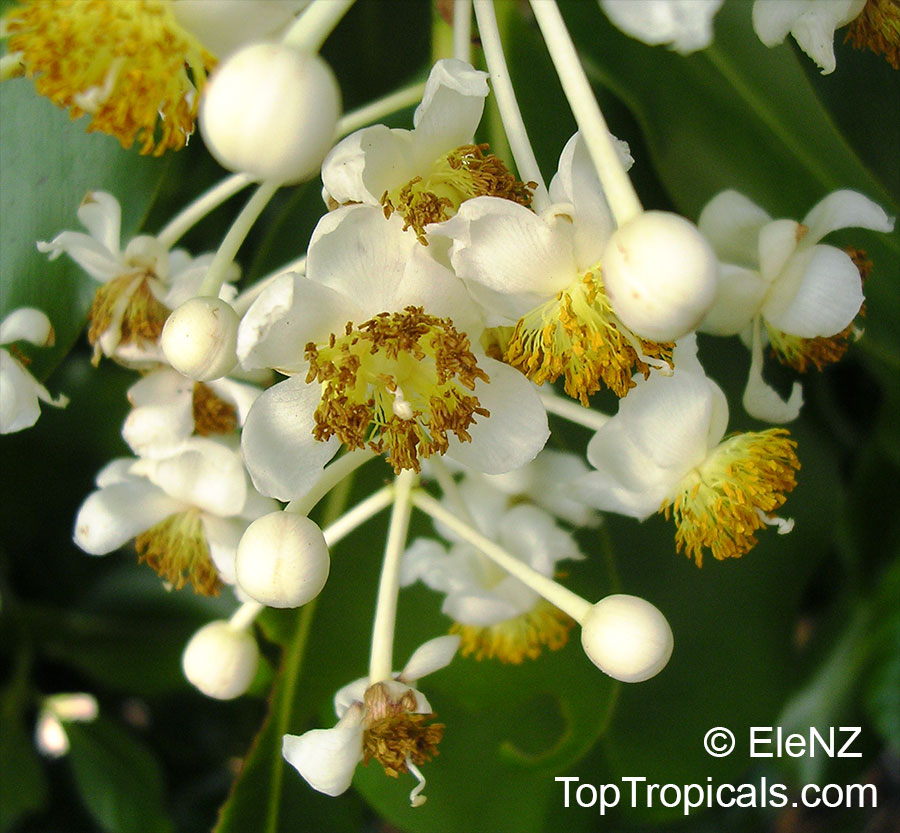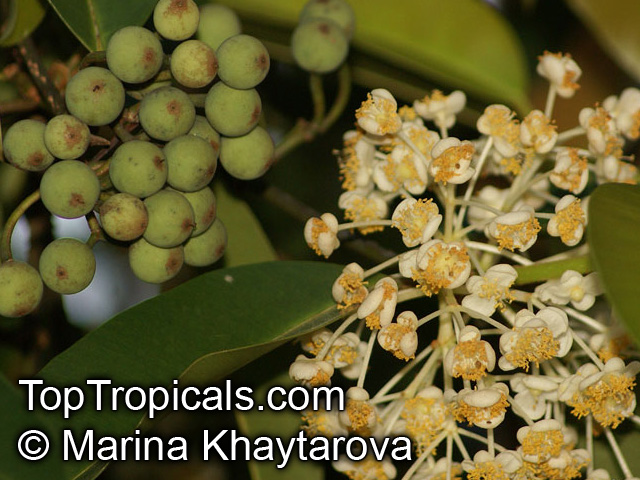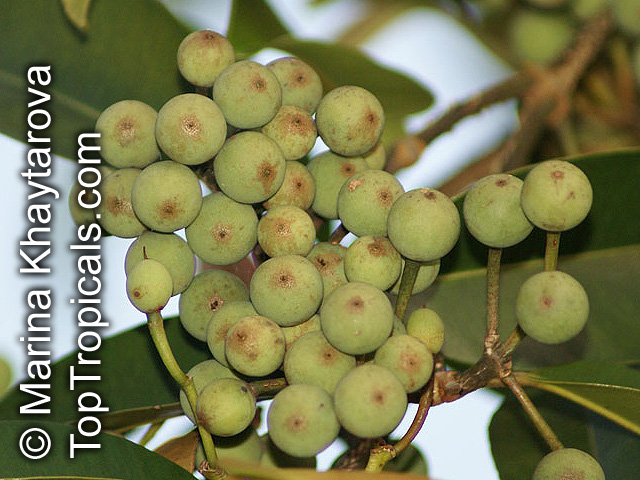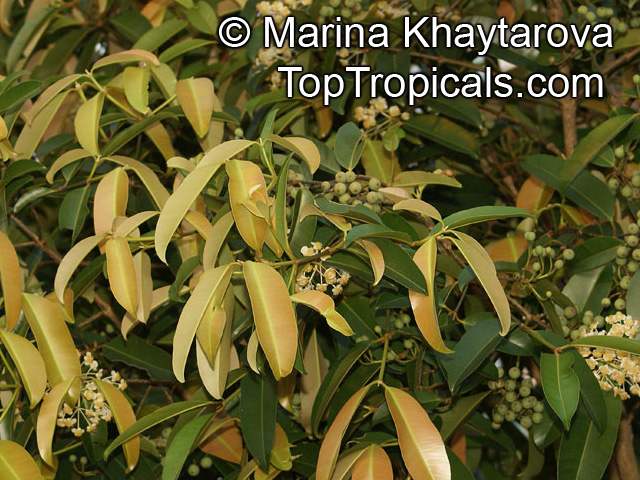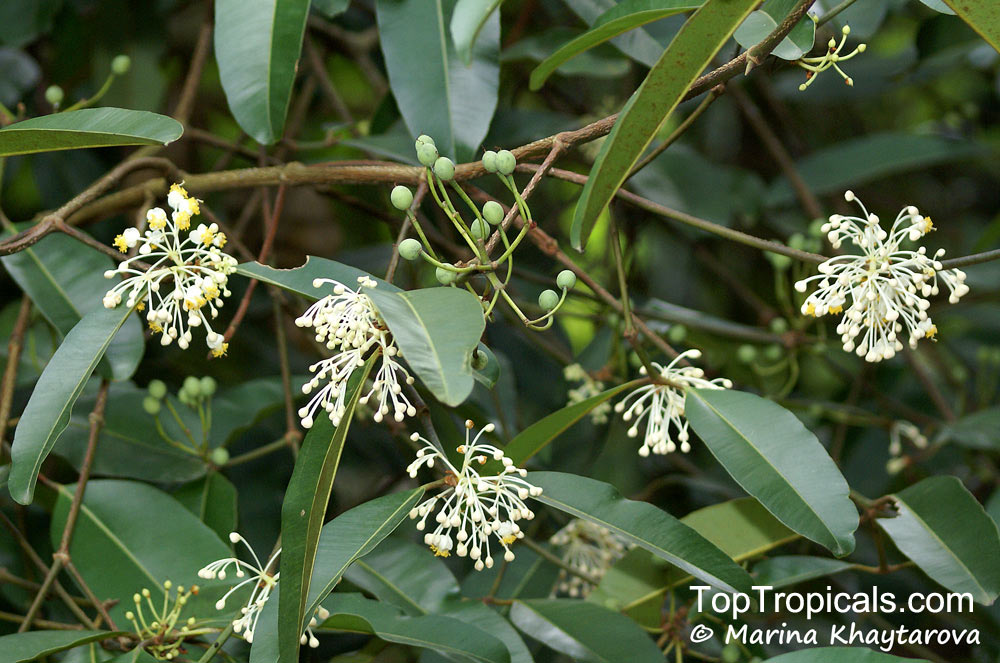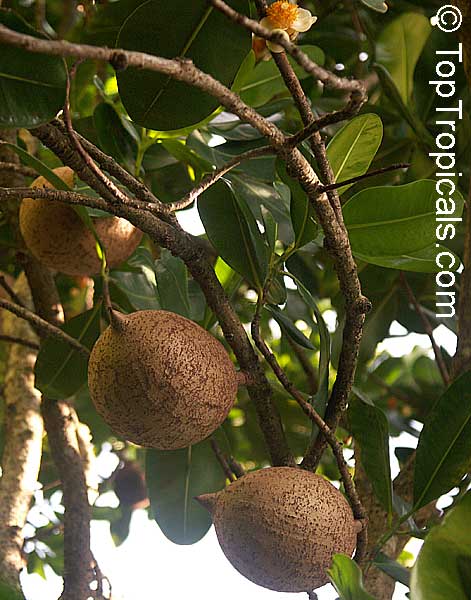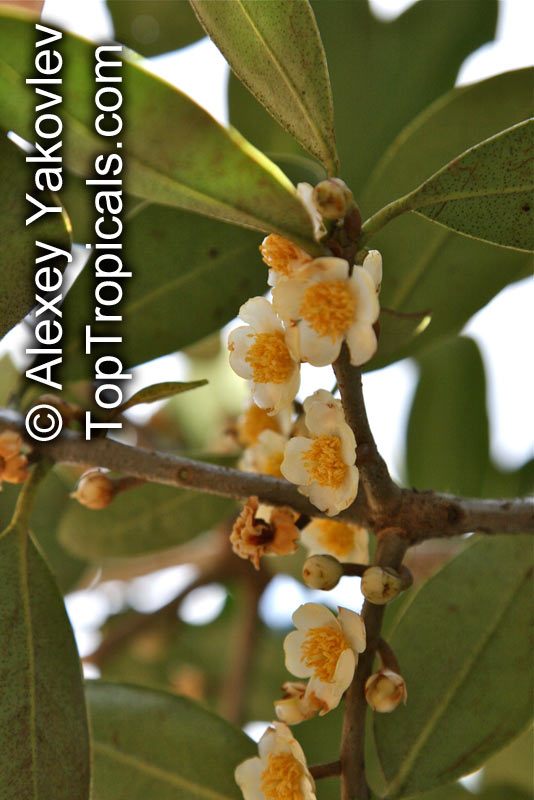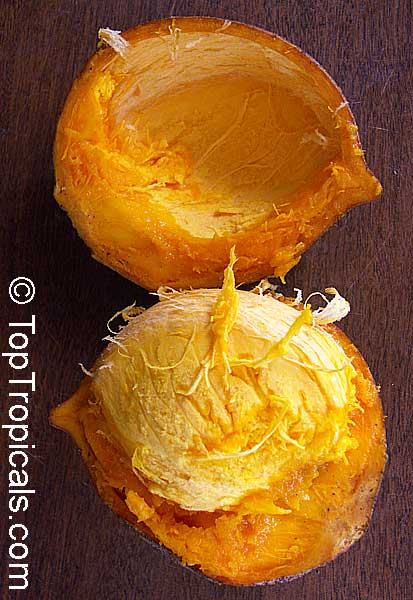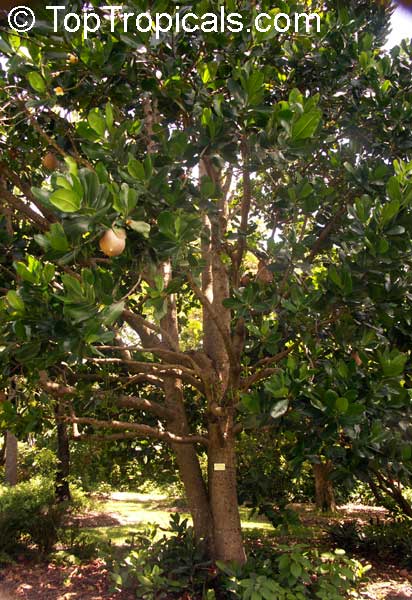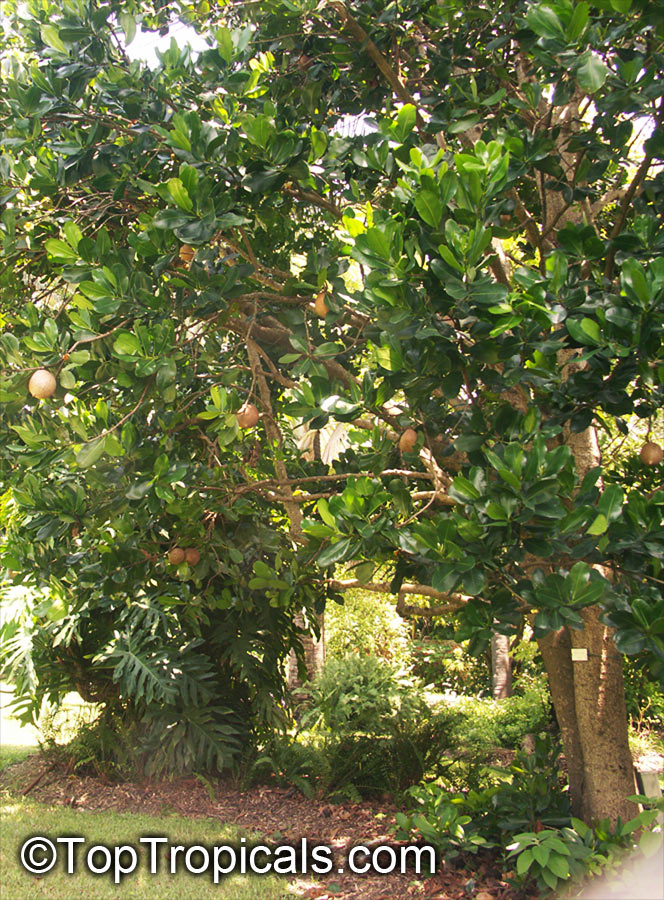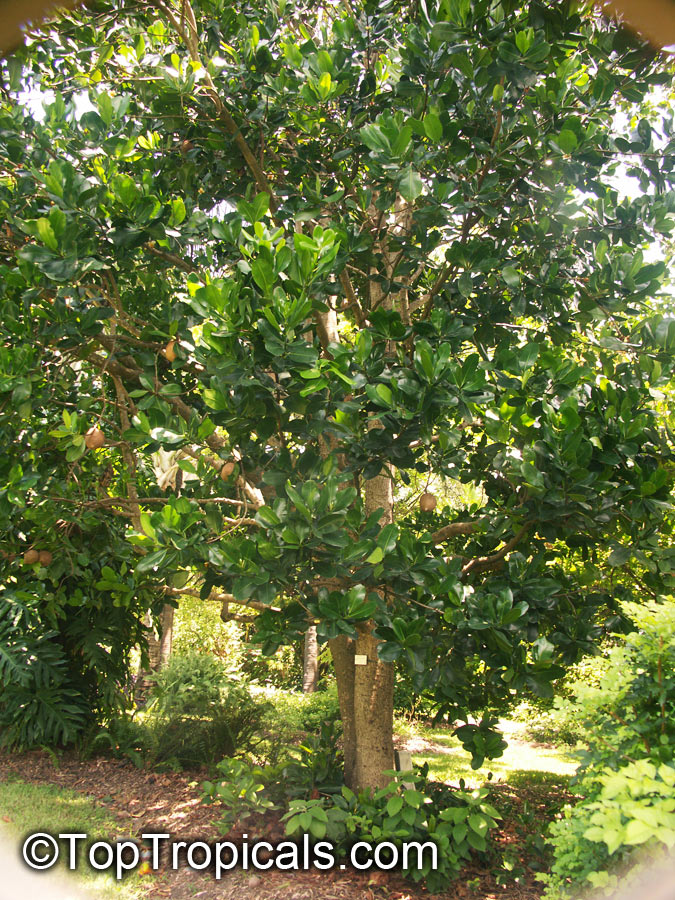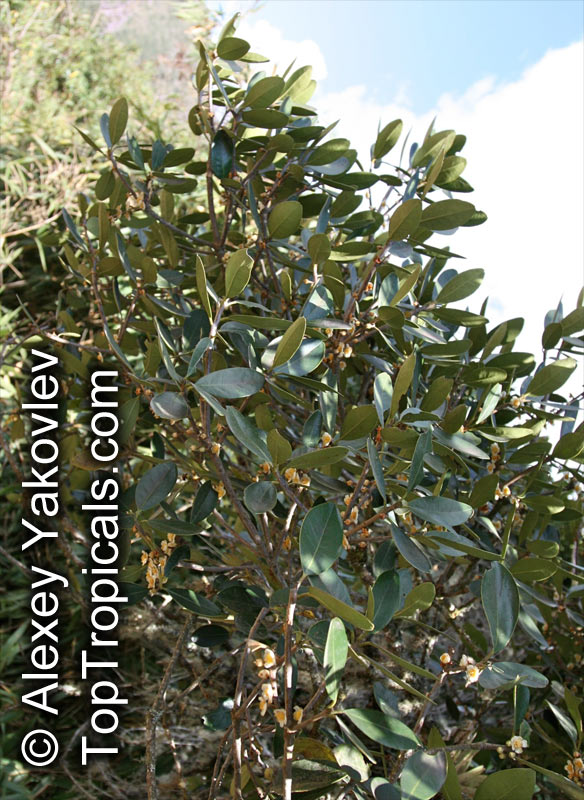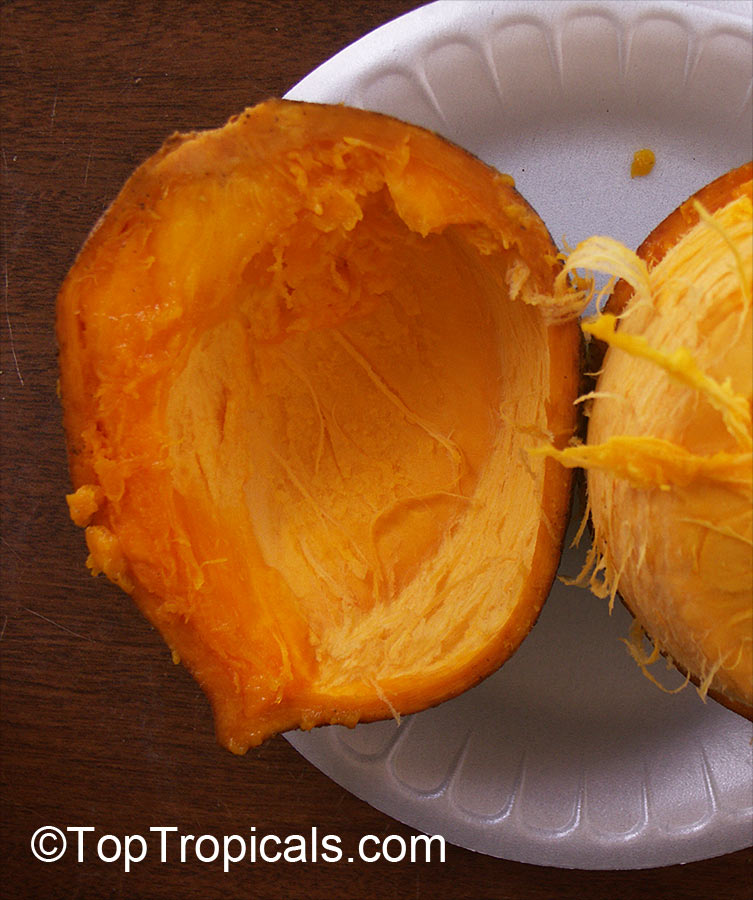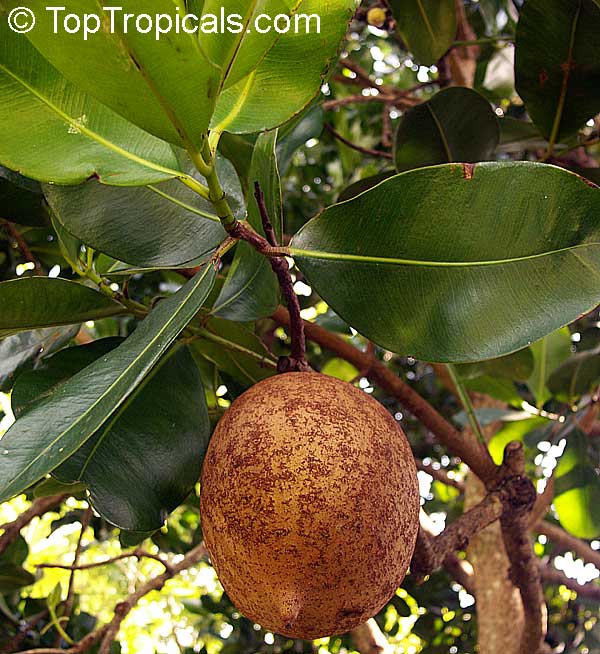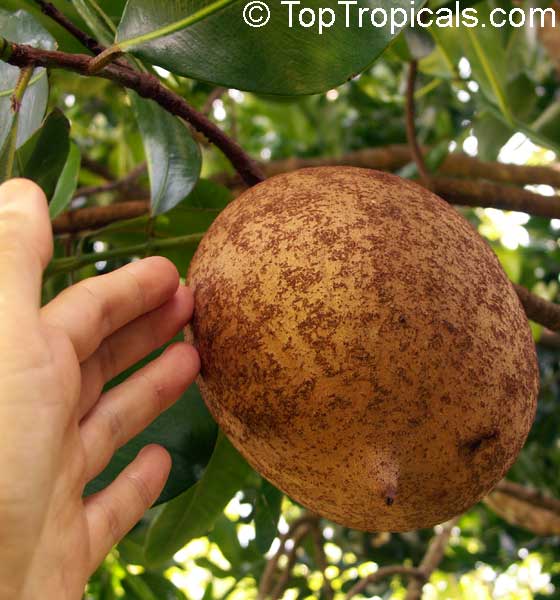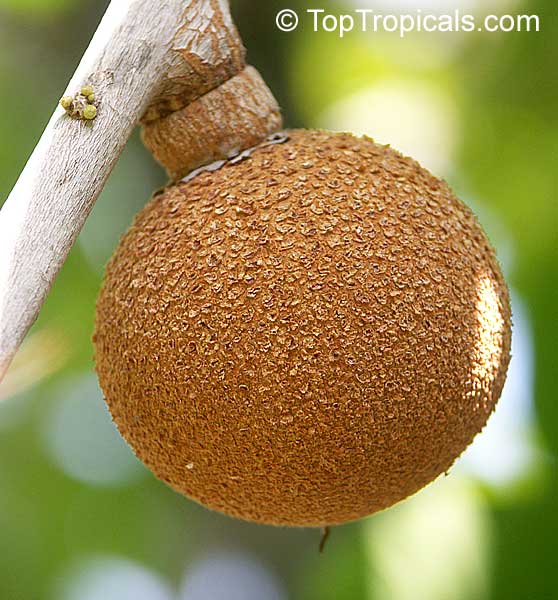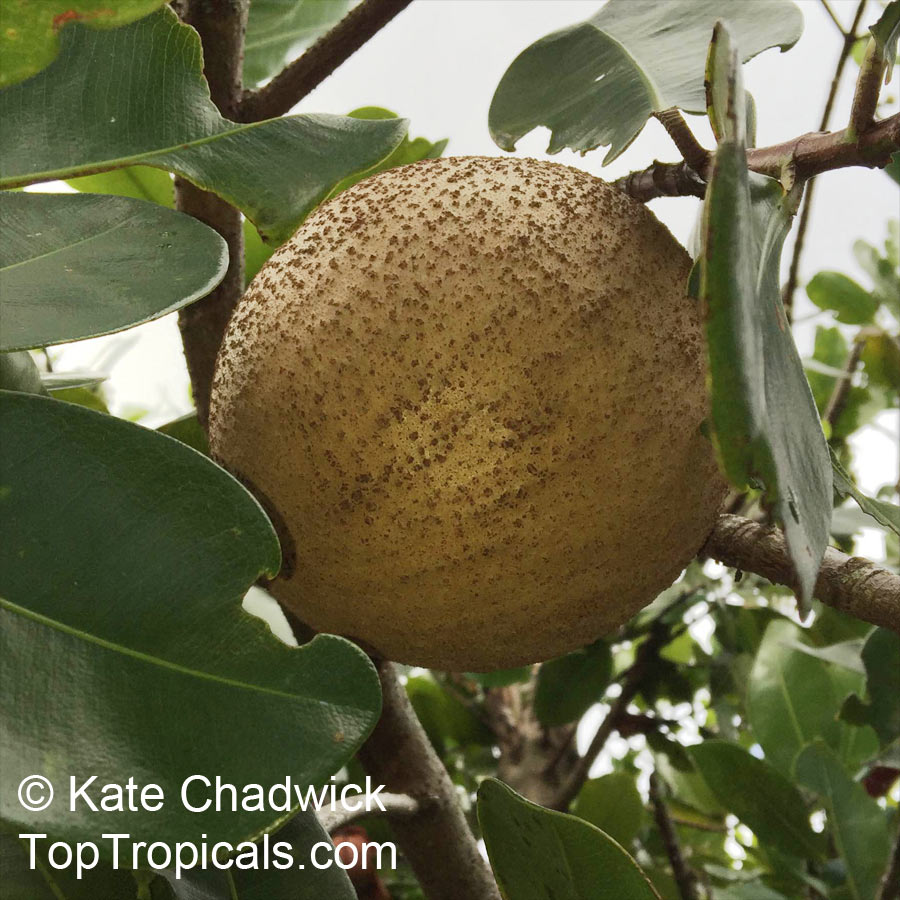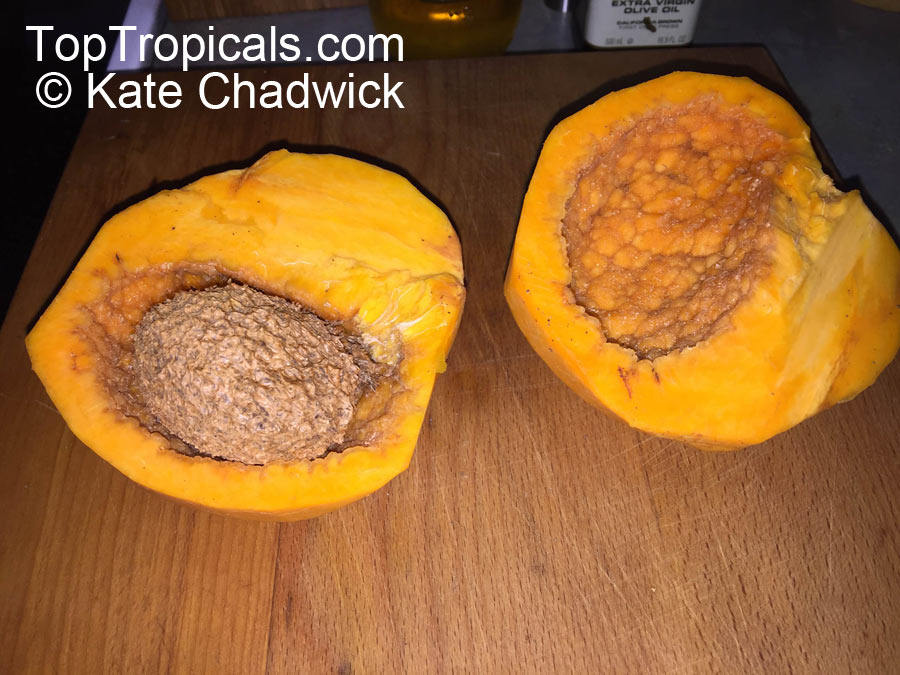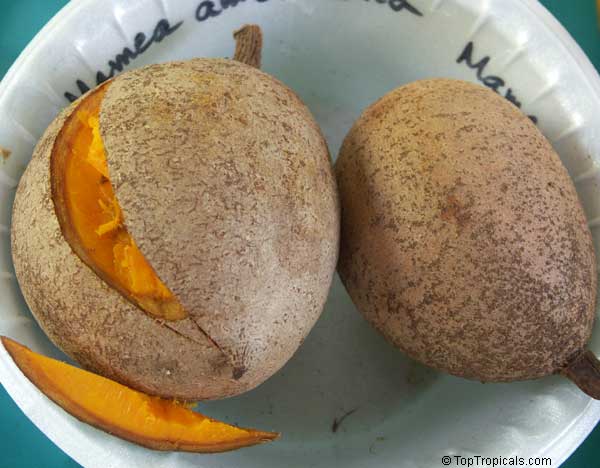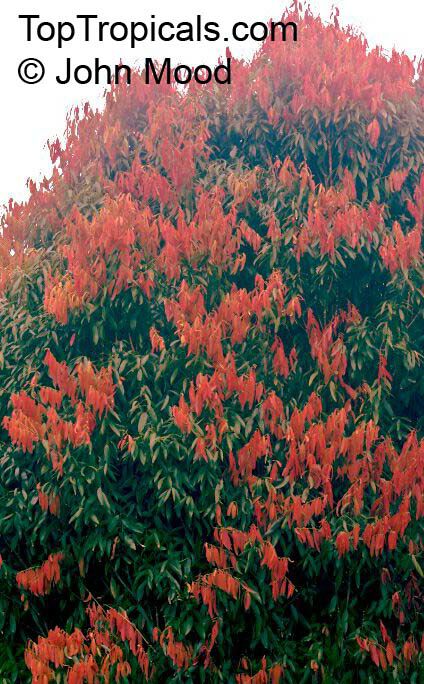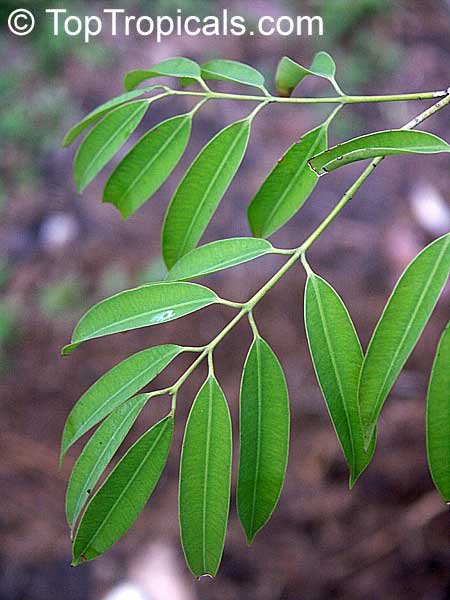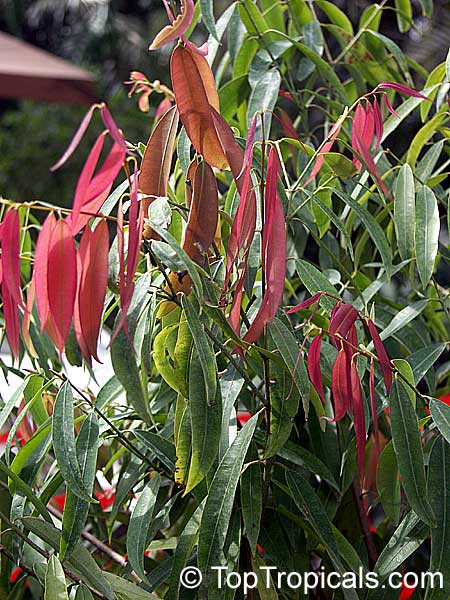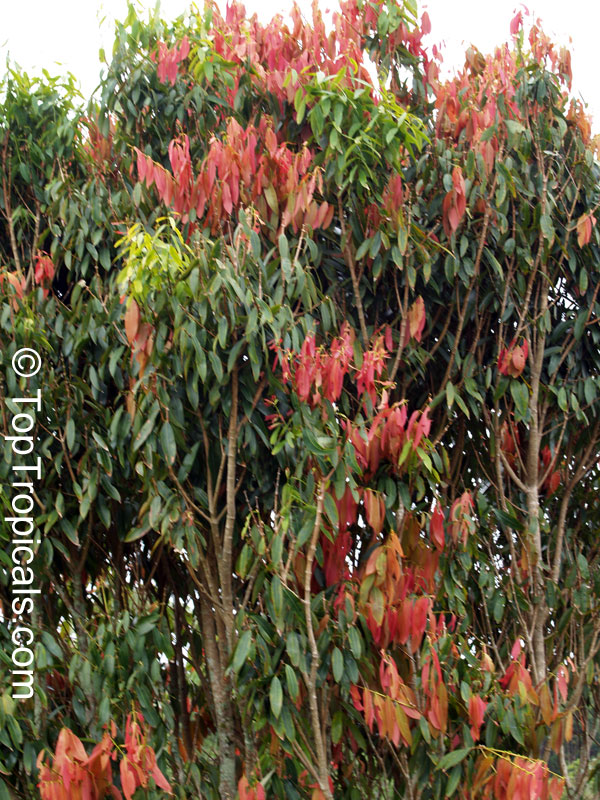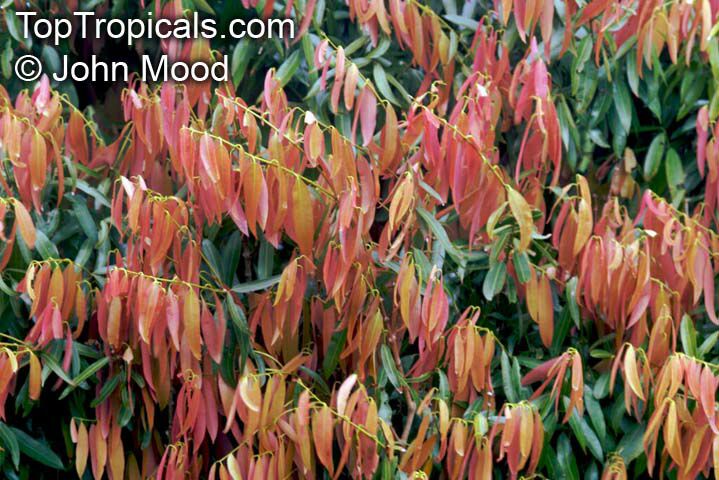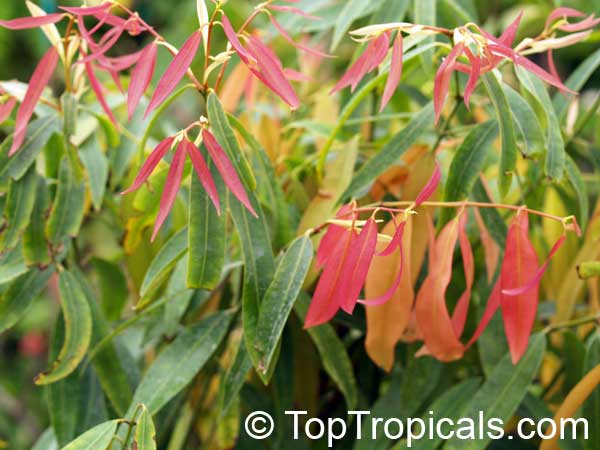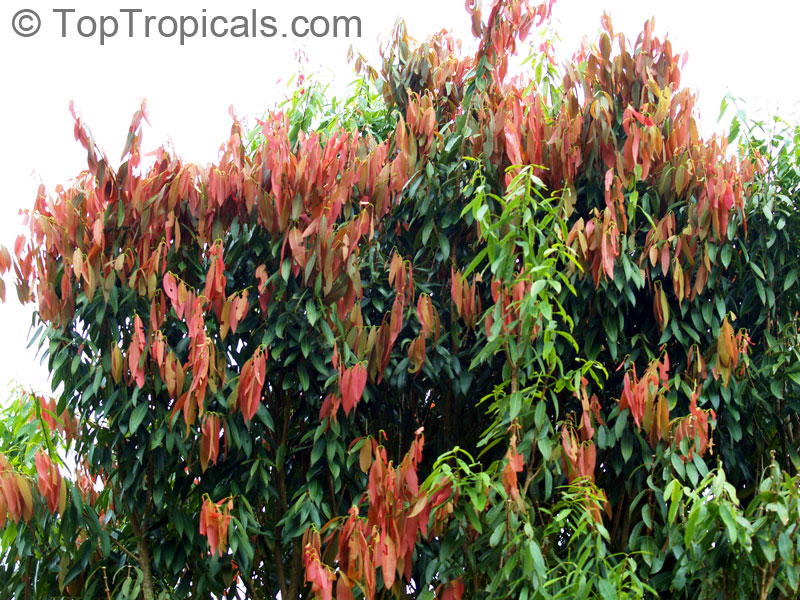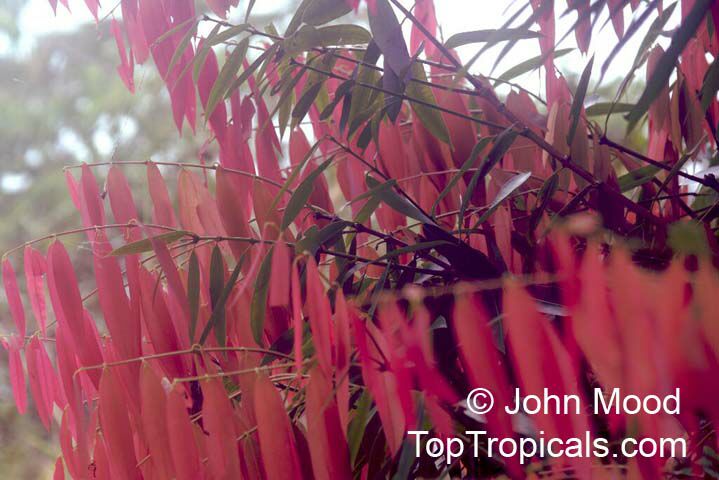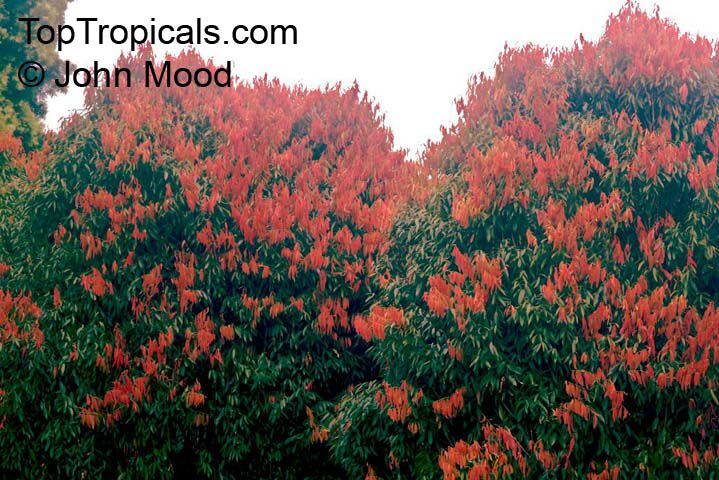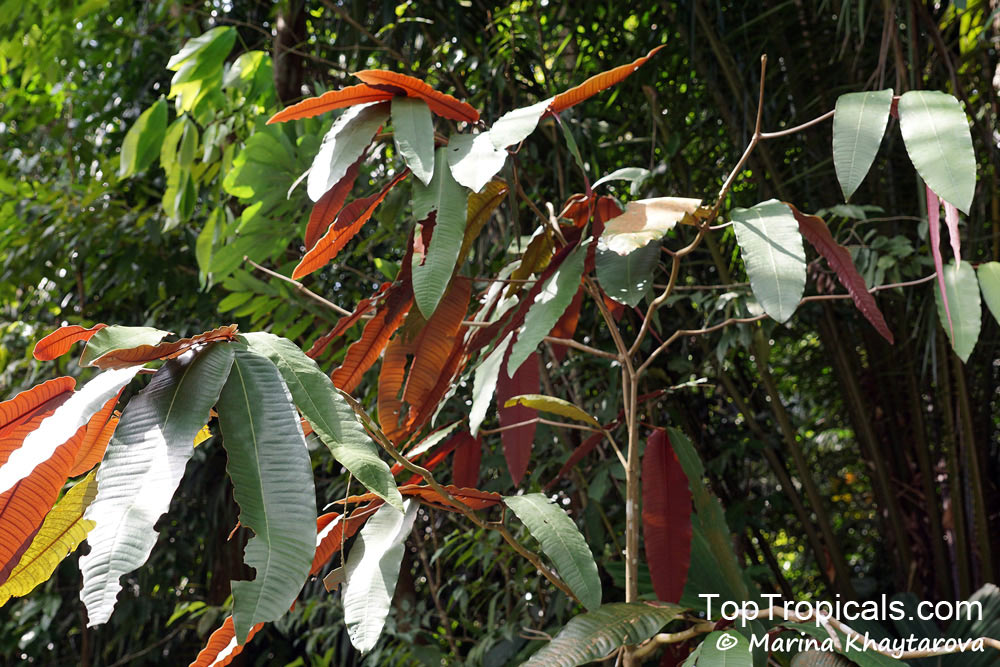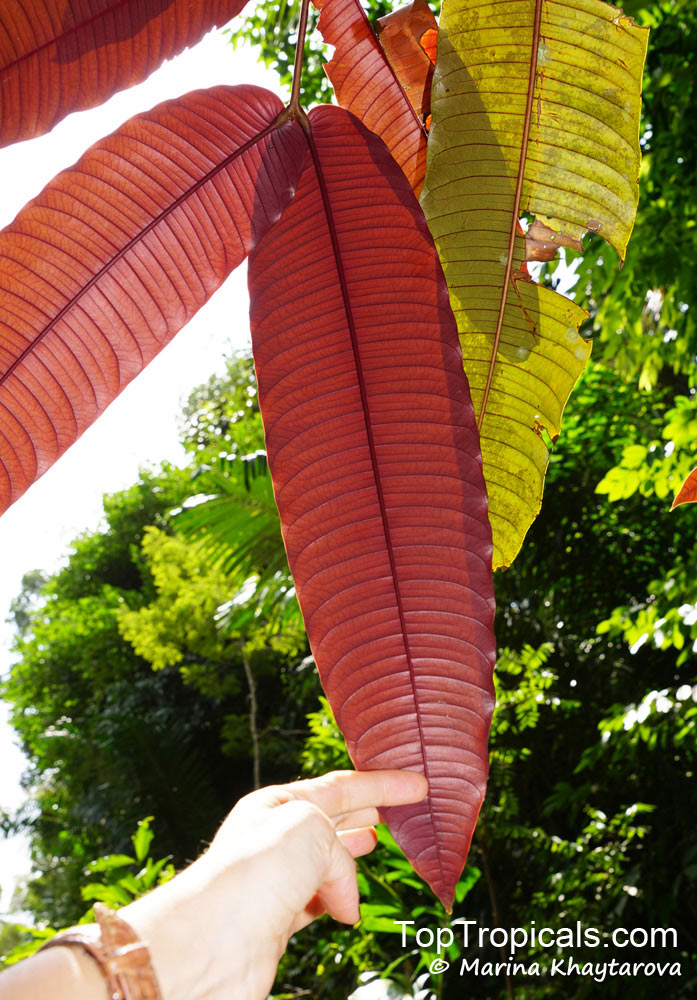Calophyllaceae - Botanical Family
Top Tropicals Plant Encyclopedia
| Number of plants found: 6 |
Botanical name: Calophyllum eputamen
Common name: Tatamaka
Family: Calophyllaceae
Origin: Mauritius




Calophyllum eputamen is a large evergreen tree from Tropical Evergreen Mountain Forest. These forests are to be found at altitudes ranging from 600 m to 700 m on the high plateaux with an annual rainfall of about 3750 mm. The soil tend to be poor in nutrients and rocky.
Calophyllum eputamen firm, dark green oval shiny leaves and produces small white flowers.
Calophyllum eputamen is similar to Calophyllum inophyllum.
Botanical name: Calophyllum inophyllum
Common names: Alexandrian Laurel, Beauty Leaf, Oil-nut Tree, Tamanu, Mastwood
Family: Calophyllaceae
Origin: India, Southeast Asia, Australia









Calophyllum inophyllum is a large evergreen tree, it has firm, dark green oval shiny leaves and produces small white flowers with a yellow center, that have a sweet aroma, reminiscent of lime. The fruit is apricot sized, yellow, and apple-flavored covering a large, thick-shelled nut with a pale yellow kernel. This nut, when freshly harvested, seems to have no oil. Once dried for about a month, it turns dark, chocolate-brown and develops a sticky rich oil.
The tree can grow inland, but favors the coastal areas. In fact, Polynesian natives prefer coastal Tamanu for therapeutic uses.
The oil is analgesic and is used for sciatica, shingles, neuritis, leprous neuritis and rheumatism. The pulverized seeds have been used to cure ulcers and bad wounds. Bark also has medicinal uses as an infusion or in other herbal remedies.
It tolerates varied kinds of soil, coastal sand, clay or even degraded soil.
Botanical name: Calophyllum soulattri
Common name: Bintang
Family: Calophyllaceae
Origin: Southeast Asia










Botanical name: Mammea americana
Common names: Mammee Apple, Abricodo Para
Family: Calophyllaceae
Origin: Caribbean, Central America and Northern South America




Mammea americana (Mammee Apple) is a tropical tree that is native to the Caribbean, Central America and Northern South America. It is a large tree, growing to more than 20 feet tall, with dark-green, leathery, 10-inch waxy leaves and inconspicuous 1-1/2-inch white and yellow flowers. Trees may have all male flowers, but the Redland variety has a perfect flower that are both male and female.
When fully mature, the Mammee Apple tree produces round to oval, scurfy brown fruits with sweet to slightly sub-acid, crispy flesh. The exterior of the fruit is similar in texture to the Mamey or Sapodilla. It is usually eaten fresh, although it can also be used in drinks, compotes and jams. The tree needs full sun exposure and regular watering. It is usually planted in USDA zones 9-11, and grafted trees may bear fruit in as little as 3-4 years.
In regions with cold winters, the Mammee Apple tree can be grown in containers and brought indoors when the temperature drops. It is important to protect Mammee Apple trees from extended periods of cold temperatures. The trees are relatively easy to care for and can grow in a variety of soil types and depths.
The fruit of a Mammee Apple tree is incredibly nutritious and offers various health benefits. It is rich in fiber, Vitamin C and antioxidants. It also provides small amounts of Vitamin A and B, as well as several other trace minerals and phytochemicals. Depending on the size and health of the tree, it can produce up to 50 fruits per season.
Botanical name: Mesua ferrea
Common names: Ironwood, Cobra's Saffron, Ceylon Ironwood, Indian Rose Chestnut, Penaga Lili
Family: Calophyllaceae
Origin: Sri Lanka, India, Indo-China, Malaysia Peninsula





Stunning ornamental tree with bright red young leaves which gives the tree unforgettable appearance. White flowers with yellow centers similar to Fried Egg Tree flowers (Onchoba spinosa). In tropics, it grows into a large evergreen tree, often buttressed at the base; with trunk up to 3 feet in diameter. The wood of Mesua ferrea is very heavy, it is used for railroad ties and building needs. Its resin is slightly poisonous, but many parts have medicinal properties. Parts Used: Flower buds, flowers, fruit, seed, root, bark, oil. Dried flower: astringent stomachic, carminative, cardiotonic, blood tonic. Leaf: external use for wound healing. Propagation: Seeds or cuttings.
Botanical names: Mesua grandis, Kayea grandis
Common name: Penaga Bayan
Family: Calophyllaceae
Origin: Malesia







Native to Malesia (SE Asia), Mesua grandis (Penaga Bayan) is a large evergreen shrub or small tree reaching 5-10 ft tall and wide, with larger specimens occasionally reaching to 20 ft. A stunning ornamental, it has glossy dark green foliage, with the leaves slightly serrated, occasionally turning reddish on the underside. When in bloom, it produces fragrant flowers between 1.5 to 2 inches across. The flowers vary in color from pink, to off-white and white. These attractive blooms appear from spring to early summer and are a real treat for the senses.
In regions with warm summers, Mesua grandis is suitable for growing in sheltered gardens and parks, but it is also well adapted for growing in large containers. When growing plants in pots, good drainage holes should be provided and the plant must be kept in full sun or semi-shade. Regular watering is essential during the growing season, especially in hot months.
Mesua grandis is hardy only to USDA Zones 9-11, where it can be grown in garden beds. It can also be grown in containers in colder climates, so long as the plant is protected from cold temperatures during winter months.
In cold regions, the plant will have to be protected during the winter. It must be grown in a large pot to ensure it can be moved indoors to a protected area when temperatures drop. During the dormant season, watering should be reduced and the pot should be left in a cool area, such as an unheated room or garage. As soon as the threat of frost has passed, Mesua grandis can be moved outside and should be given regular water and occasional light fertilizer applications.
Use link to repeat this search:
https://toptropicals.com/cgi-bin/garden_catalog/cat.cgi?search_op=and&keyword_op=and&language=e&family=Calophyllaceae
&number=10&no_change_lang=1&user=tt&sale=1&first=0
